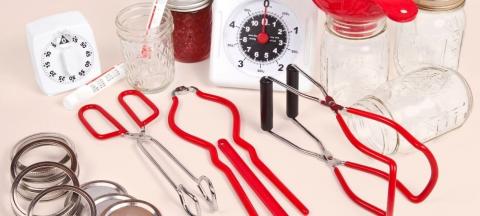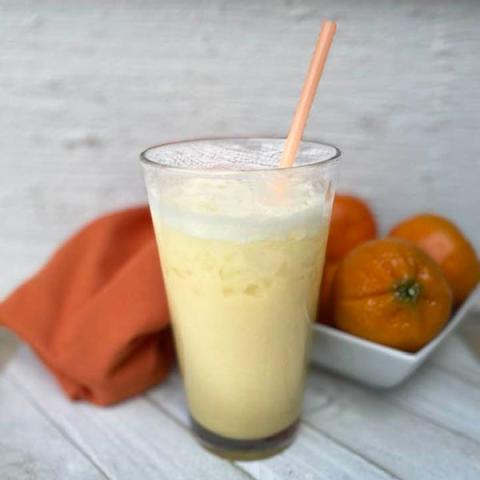
Here are a few tips for storing home canned foods:
- Label and date the jars and store them in a clean, cool, dark, dry place.
- Do not store jars above 95°F or near hot pipes, a range, a furnace, in an uninsulated attic, or in direct sunlight. Under these conditions, food will lose quality in a few weeks or months and may spoil. Dampness may corrode metal lids, break seals, and allow recontamination and spoilage.
- For best results, store canned foods at 50°F to 70°F.
- Do not taste food from a stored jar with an unsealed lid or food that shows signs of spoilage.
Destroying Spoiled Canned Food
Growth of spoilage bacteria and yeast produce gas which pressurizes the food, swells lids, and breaks jar seals. Examine each jar before use. Lids should have a good seal. Look at the contents for rising air bubbles and unnatural color. While opening the jar, notice unnatural odors and look for spurting liquid and cotton-like mold growth on the top surface of the food and underside of the lid. Spoiled low acid foods, including tomatoes, may exhibit different kinds of spoilage evidence or very little evidence. Treat all spoiled low acid canned foods as having produced botulinum toxin. Carefully handle spoiled, low acid canned foods, including tomatoes, in one of two ways:
- If suspect glass jars are still sealed, place the can or jar in a heavy garbage bag. Close and place the bag in a trash container and send to the landfill.
- If the suspect cans or glass jars are unsealed, open or leaking, they should be detoxified, using the process the below, before disposal. Use rubber gloves to handle suspect containers.
Detoxification Process
Wear disposable rubber or heavy plastic gloves. Carefully place the containers, lids, and contents in a large stock pot (8 quarts or larger) or boiling water canner. Wash your gloved hands thoroughly. Carefully add water to the pot. The water should completely cover the contents of the pot and extend at least 1 inch above the contents. Avoid splashing the water. Place a lid on the pot and heat the water to boiling. Boil 30 minutes to ensure detoxifying the food and all container components. Cool and discard the container, lids, and food in the trash and send to the landfill.
Cleaning Up the Area
Contact with botulinum toxin can be fatal whether it is ingested or enters through the skin. Take care to avoid contact with suspected food or liquid. Wear rubber or heavy plastic gloves when handling suspected food or cleaning up contaminated work surfaces and equipment. Mix a fresh solution of 1-part unscented liquid household chlorine bleach (at least 6 percent sodium hypochlorite) to 5 parts clean water to clean surfaces, equipment, or other items, including can openers and clothing that has come into contact with the suspected food. Spray or wet the contaminated surfaces with the bleach solution and let stand for 30 minutes. Wearing gloves, wipe up the treated areas with paper towels being careful to minimize the spread of contamination. Dispose of the paper towels by placing them in a plastic bag before putting them in the trash. Reapply the bleach solution to surfaces and equipment and let stand for 30 minutes and rinse. Thoroughly wash all detoxified counters, containers, equipment, and clothing. Discard gloves when the cleaning process is completed.
Sources:
National Center for Home Food Preservation, University of Georgia Extension
USDA Complete Guide to Home Canning, National Center for Home Preservation
Article originally written by Julie Albrecht. Updated and reviewed by Carol Larvick in 2021.
Tags:
Feedback Form
Feedback Form
If you do not see the article, please scroll up the page.








